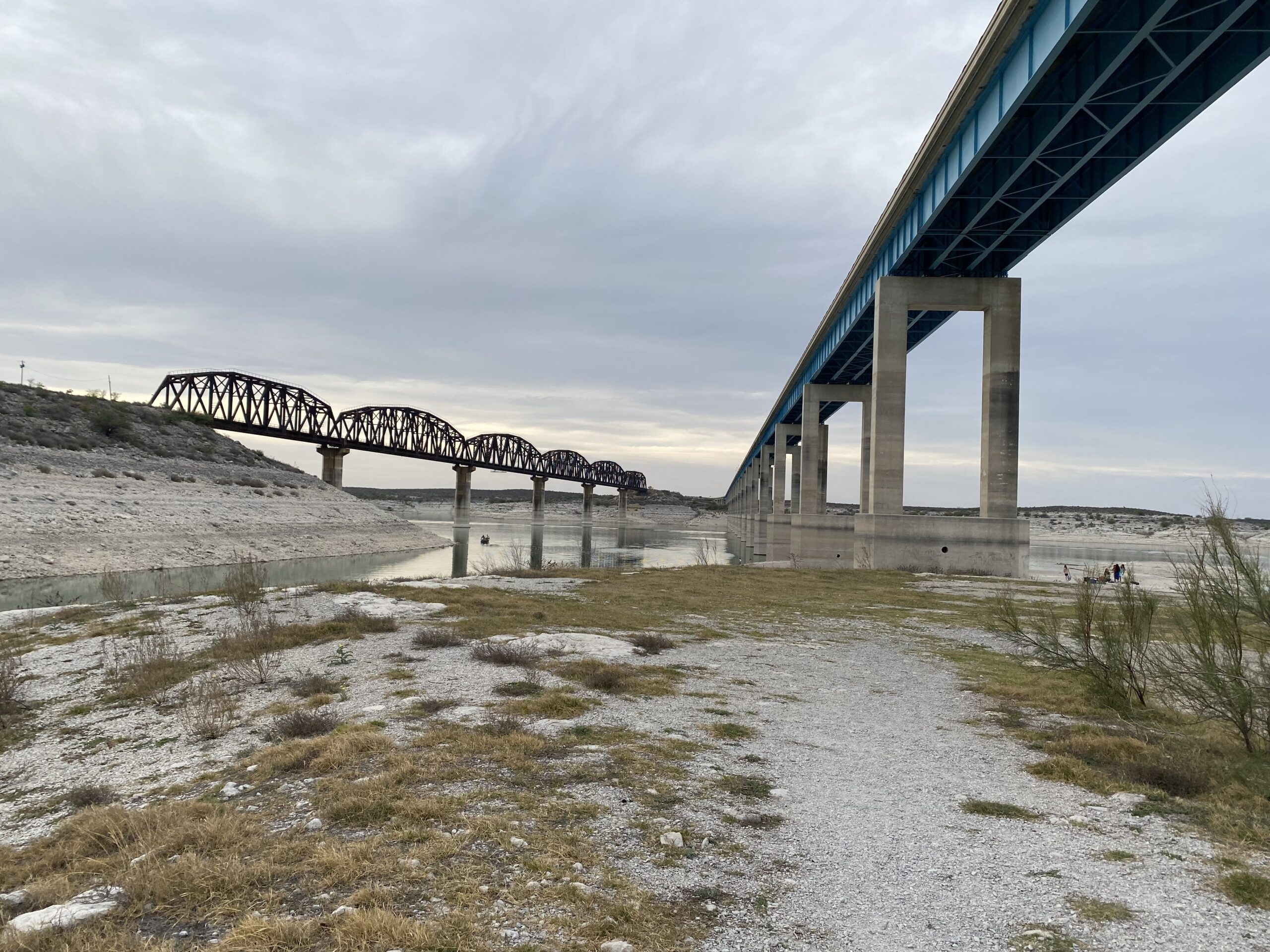Texans revel in the size of their state. But it’s a b*tch to drive across.
We left Arkansas for Big Bend National Park and took nearly a week to get there. Sure, we could have driven there in two days, but we try to limit our daily travels to 300 miles. And we ended up stopping for multiple nights in Dallas, San Antonio and the Amistad National Recreation Area.
Our first stop was the Lake Park campground in Lewisville, Texas, about a half hour away from downtown Dallas. Our main purpose for our one free day there was to visit the site of the JFK assassination.

We drove downtown the next morning and did a free walking tour via an app developed by the Dealey Plaza National Historic Landmark District. The tour provides audio at various stops around the plaza recreating what happened on that fateful day in 1963. The information was interesting but not much of a walking tour. We could have listened to the commentary from a single spot and it all would have made sense.
Afterward we headed up to the Sixth Floor Museum to see the spot where Lee Harvey Oswald fired his shots. The museum does a nice of job of providing context leading up to the assassination, talking about John F. Kennedy’s background and why he came to Dallas. Eventually, the displays lead you to the window where the shots were fired with boxes stacked in the way they were at the time.

After you pass the window, the displays continue to talk about the investigation, Oswald’s death and the conspiracy theories that followed. It’s hard to conclude from the information provided that any one other than Oswald was involved. But then again, you’re getting the official side of the story.
The way the information is presented also shifts the focus from being solely on the shooter to dealing much more with Kennedy and the other people involved.
From Dallas, we drove to the outskirts of San Antonio, staying two nights at Crane Mills Campground in Canyon Lake, Texas. Mrs. 123 had never seen the Alamo, so we drove downtown and paid for an audio tour of the grounds. People think of the Alamo as only the mission church that has become the classic image of the site. But the Alamo was actually a much bigger compound.

The complex recently opened a museum onsite to display a variety of letters and documents related to the Alamo, some weapons and a collection of Alamo artifacts gathered by Phil Collins. (Yes, that Phil Collins!)
The Alamo is one of Texas’ mythological sites, but a lot of what we thought we knew about the Alamo and the Texas revolution was more myth than fact. We listened to a bit of a podcast with the authors of a 2021 book titled “Forget the Alamo: The Rise and Fall of an American Myth.” I’m definitely going to have to track down that book.

After completing our tour, we walked down to the Riverwalk, a 15-mile long city park that follows a waterway through downtown San Antonio. The walkway is lined with bars and restaurants, and boats ply the waters with tourists and party groups. It’s all very festive.
We had read that the best Tex-Mex restaurant on the Riverwalk was Acenar, and so we walked over there for an early dinner. I had the seafood enchiladas and Mrs. 123 had a plate of three different types of enchiladas. It was all very good and very reasonably priced.

The next day we drove another couple of hours to a dry camping site in the Amistad National Recreation Area, just outside of Del Rio. We were able to snag the last open spot at Governor’s Landing, a dry camping site alongside the box canyon. A ranger told us the water levels were at a 13-year low, and more than 60 feet below normal levels.
We didn’t have any grand plans for visiting here. The stop was more to break up the long drive. Del Rio offered a place to stock on groceries and refill prescriptions. We went for a three mile hike in the desert and generally took it easy for a day and a half.
Days: 67
Miles Traveled: 9,395
Next stop: Big Bend National Park


